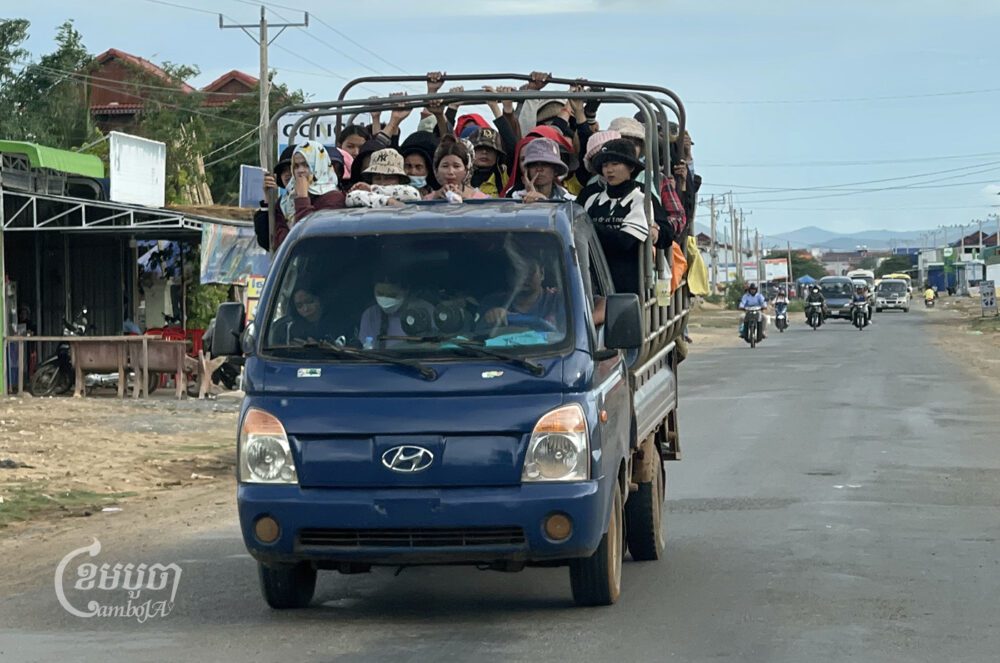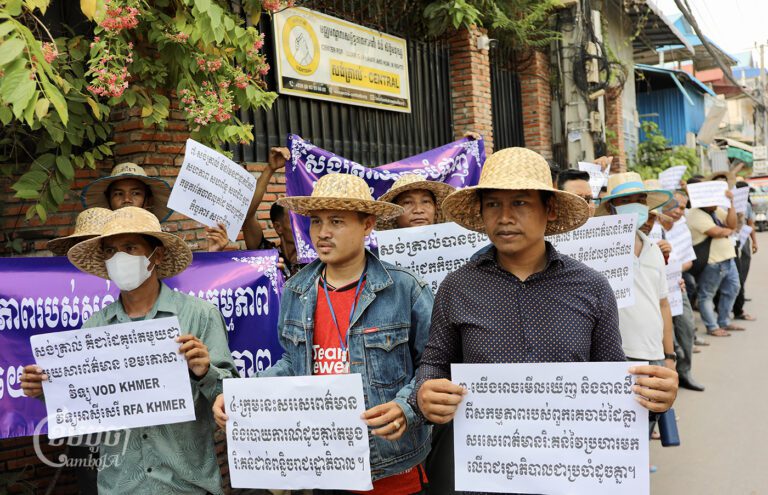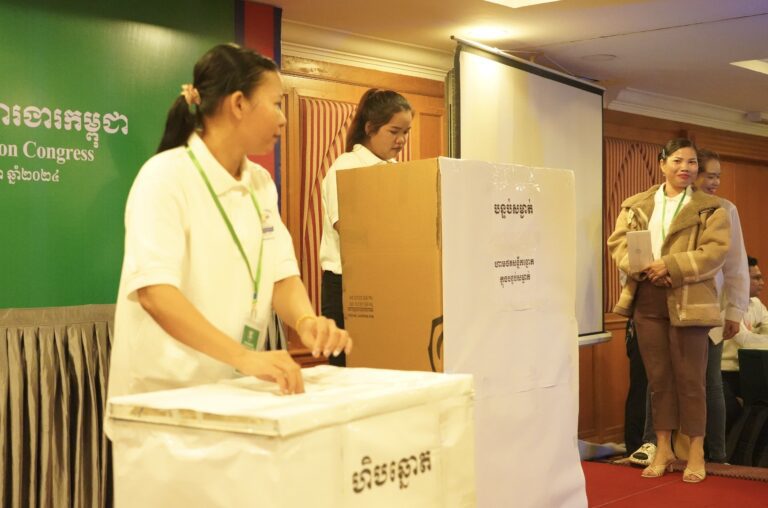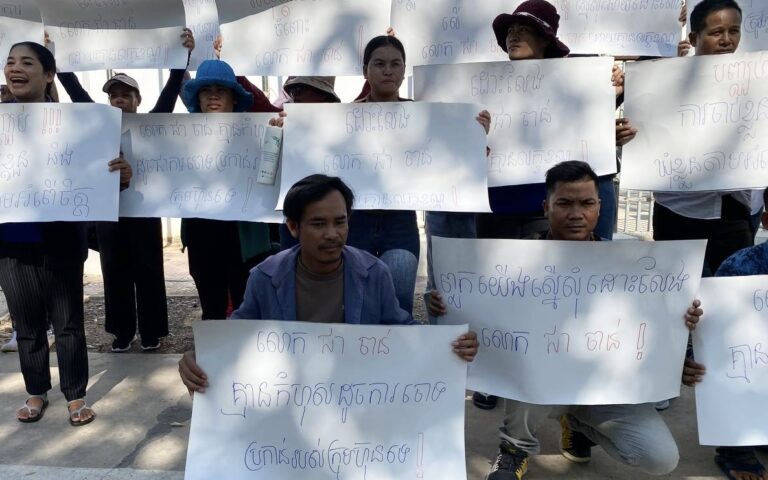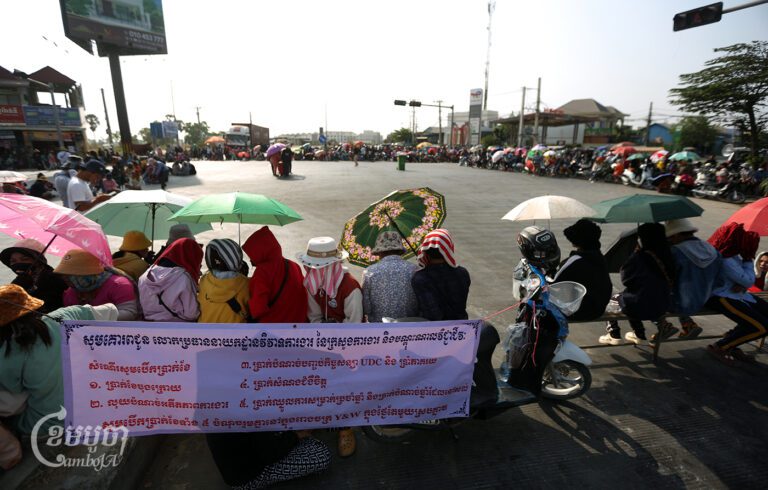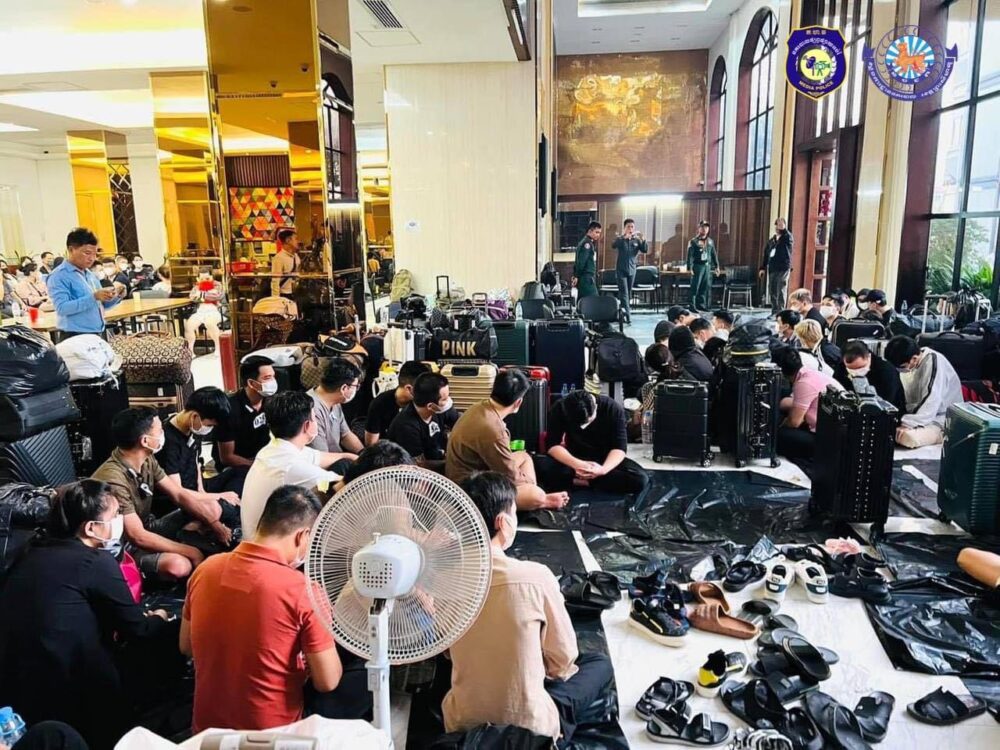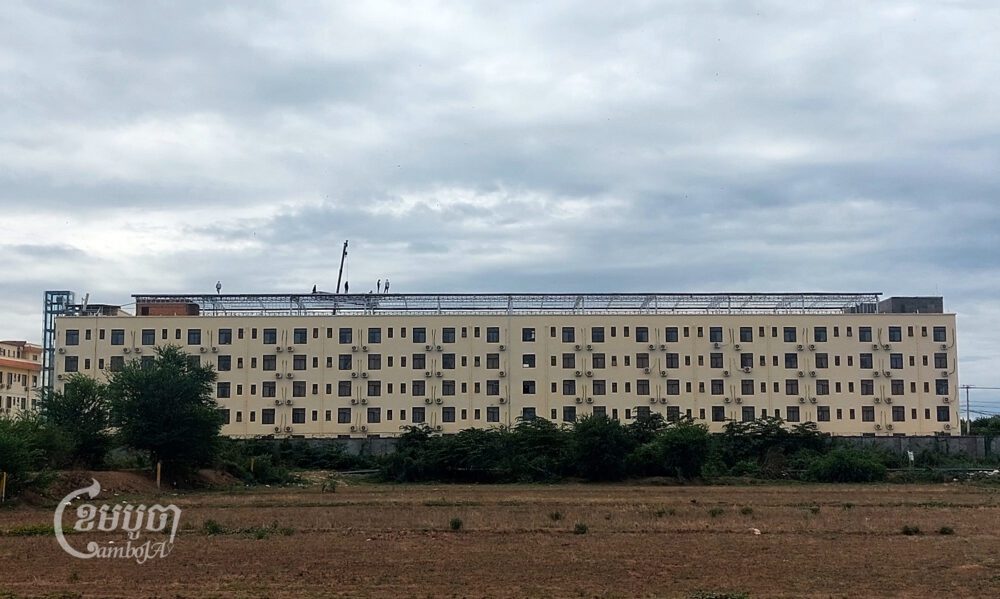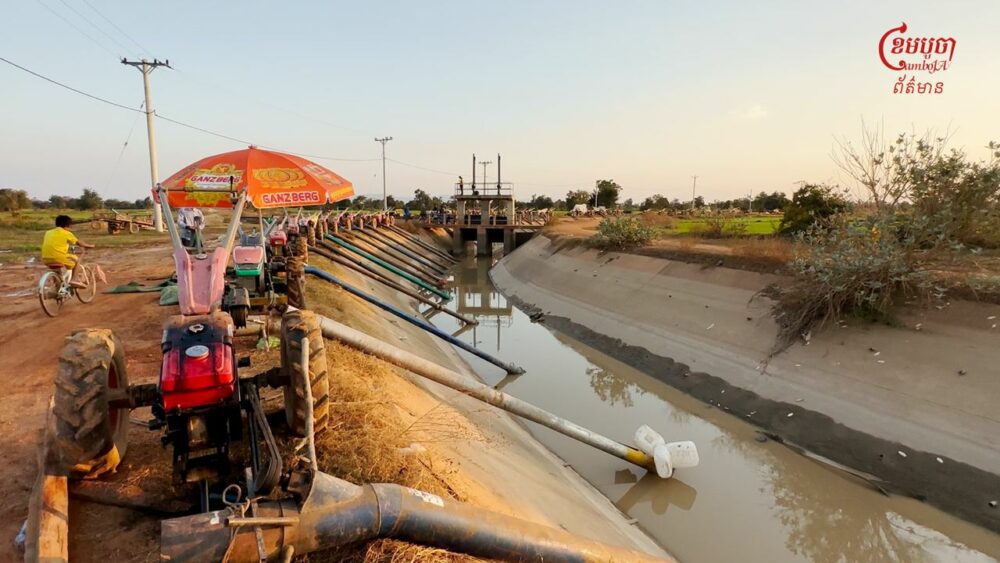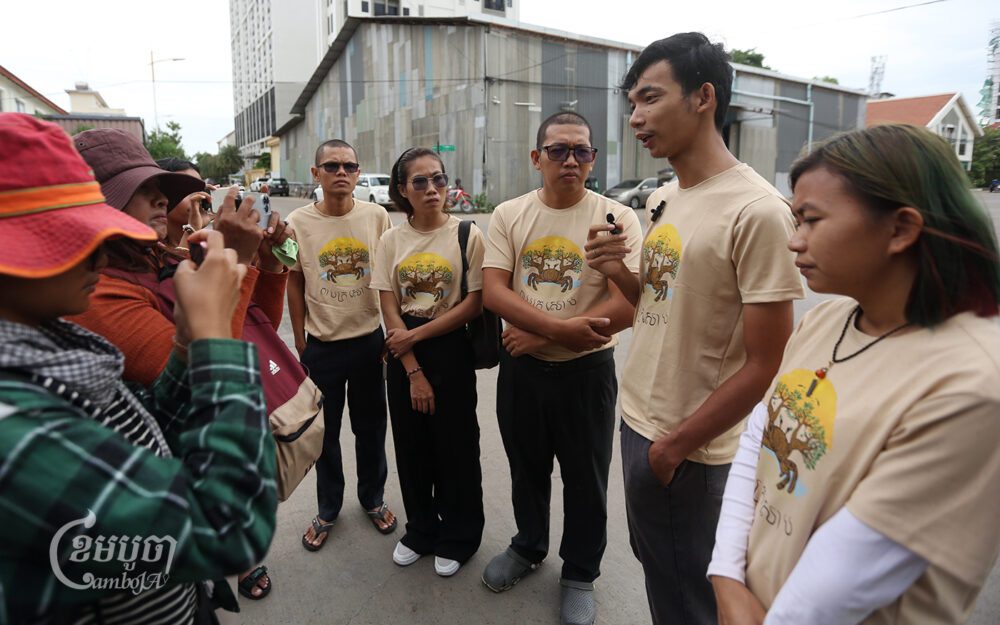After several rounds of discussion since 2018, state institutions on Wednesday vowed to make it safer for workers across the country to have chairs to sit on while traveling to and from work, which has typically been flatbed trucks. The full installation of seats on flatbed trucks is expected by the end of 2024.
The goal of shifting to full usage of passenger buses by 2027 to transport workers is still being negotiated by relevant institutions as the transition from typically flatbed trucks to enclosed buses was impacted by limited resources.
Preap Chanvibol, advisor to the Ministry of Public Works and Transport and deputy director of the road traffic safety team for worker prevention mentioned that in 2019, state institutions planned to move from flatbed trucks to standard buses with proper seats. However, it was difficult to change due to the high cost.
Nevertheless, during a speech on Wednesday, Chanvibol urged flatbed truck owners to focus on installing seats on their vehicles by the end of 2024 so that the risk of standing is reduced. On the issue of enclosed buses, flatbed truck owners can keep the discussion down for the moment, he said.
“To achieve the goal by the end of 2024, just set up the seats, no need to wait for [implementation of] standards as it’s not possible [yet] to convert flatbed trucks into enclosed buses,” he said. “Installing seats costs only $300 to $400 and will reduce the number of passengers by 10 people, but it’s better than standing. If you sit, it is more orderly, comfortable and safer.”
At present, there are about 220,000 garment workers who are transported in 3,332 vehicles. Sixty-five percent of the total garment workers travel in 1,963 flatbed trucks, while thirty-five percent travel in 1,369 enclosed buses.
There are two transport modes among garment workers. About 76% of them travel by standing up while the rest travel on flatbed trucks fixed with proper seats, especially workers in Kampong Cham province.
Kheng Khoeun, a flatbed truck driver in Kampong Cham province who has worked in the field for nine years, told CamboJA News that he fixed the seats at a cost of $150 since the beginning as he was concerned about the safety of the passengers. It was also a requirement of the company.
“I think about their safety if they are standing and when it swings [..] I find it dangerous. It is like half a jug of water […] sometimes it swings right and then it swings left. But if we sit down, it is safer and more stable.
“If [we] put a chair, it will carry less [passengers] than standing. But since I started transporting, I have never seen anyone carrying more than that,” he said. Previously, he used to transport 40 people a day but now it has been reduced by half, resulting in a lower income. At times, he needs to dip into his household savings to purchase gasoline.
When asked if he could change his truck to a passenger bus, he said it might not be possible because the road conditions are not good or not suitable for buses. He also did not have enough money to switch to buses.

On Wednesday, a workshop to promote the replacement of workers’ vehicles in accordance with technical and comfort standards was held to encourage the use of enclosed buses to transport workers by 2027.
During the event, stakeholders, especially drivers, unions, local authorities, and NGOs, raised issues and gave suggestions. One participant was heard saying that, “Even if there are more workshops, [the outcome] will be the same […] if there is no action”.
The Vehicle Replacement Project, launched by the NGO AIP Foundation with the Labor and Vocational Training Ministry in 2018, was implemented with drivers who service more than 1,000 factories in Kandal, Kampong Speu, Kampong Chhnang, Kampong Cham, Kampong Thom, Svay Rieng and Phnom Penh.
AIP Foundation country director for Cambodia Kim Pagna said the government should “definitely” stop allowing flatbed trucks to transport workers by setting specific deadlines to avoid further escalation. In fact, he noted, the number of flatbed trucks in 2022 was only about 1,600 units, but grew to nearly 2,000 in 2024.
He also urged state institutions to find ways to enable transport drivers to attain loans at low interest rates of 6% or 7% per year, similar to the agriculture and tourism sectors. According to Pagna, 90% of the drivers interviewed by AIP indicated that they had taken out loans with an interest rate of 16%.
Although the interest rates varied between financial institutions, the current average interest rate for vehicle loans from Phnom Penh commercial banks starts at 9.5% per year. For instance, Acleda bank loans range from 12% to 18% annually.
Pagna also said relevant institutions should pay attention to maintaining the income of transport drivers by increasing garment workers’ fares traveling by car so that drivers can earn a fixed income like now.
Minister of Labor and Vocational Training Heng Sour emphasized that the goal of replacing flatbed trucks is not to increase the pressure on transport drivers. It actually concerns workers’ safety and comfort, and requires drivers to be responsible. In addition, he said the push should not force flatbed truck owners to change immediately, but to encourage them to try their best.
“The goal of the government to make transportation safer and more comfortable is not aimed at making drivers or those who provide transport services lose their jobs. In fact, the government’s policy is to help those who provide these services obtain buses or other convenient transportation.”
Heng Choeun, president of Cambodian Agricultural Workers Federation (CAWF), who participated in the workshop requested stakeholder institutions to check on drivers as he noticed that many of them drink alcohol during their free time. “Even if vehicle technical standards have been met, the driver may not control the steering wheel properly. This could be a risk.”
“I think the ministry, as well as the traffic technical officers, should encourage drivers to acquire education about traffic safety and have a proper driving license,” he said. In addition, there is a big challenge in drunk driving because drivers transporting 20 to 30 or up to 100 people can cause fatal accidents.


